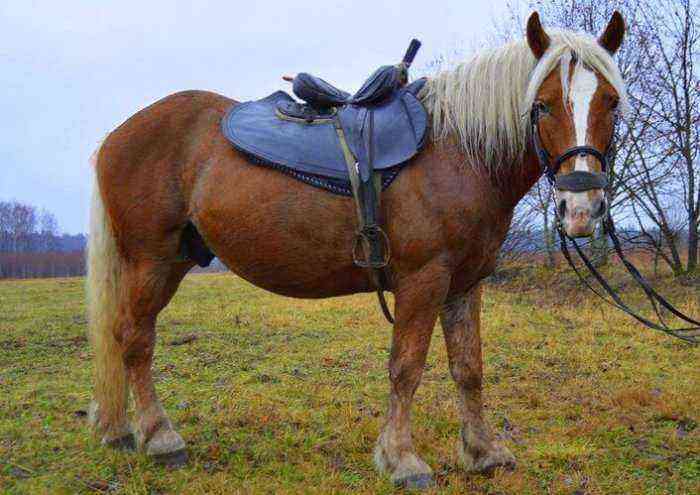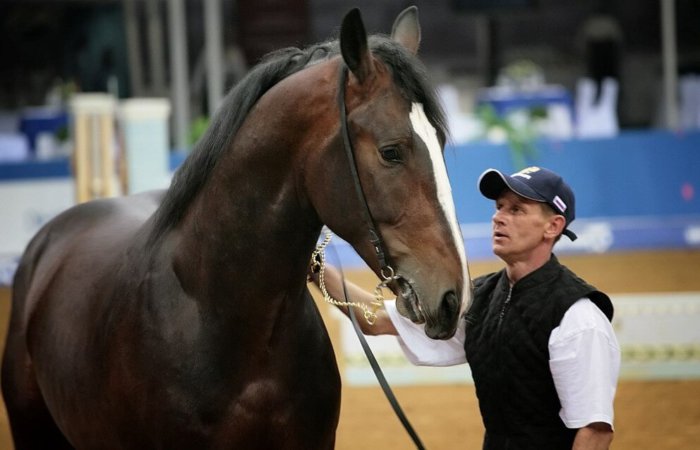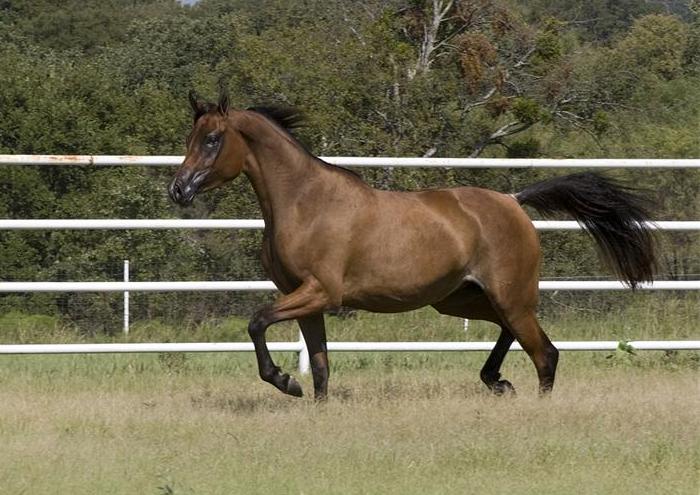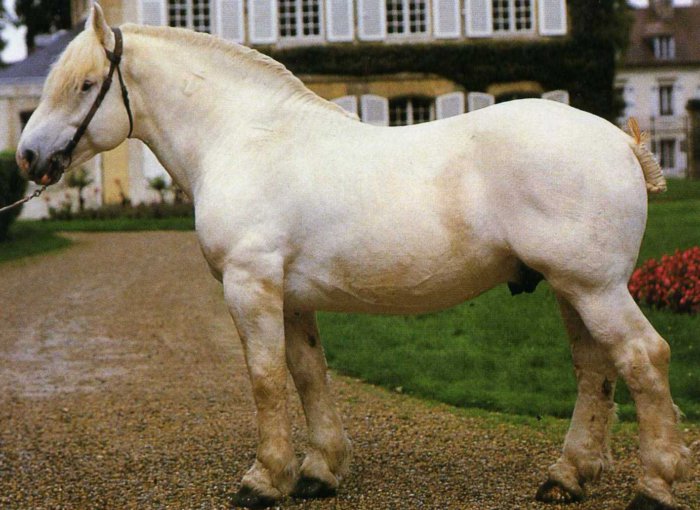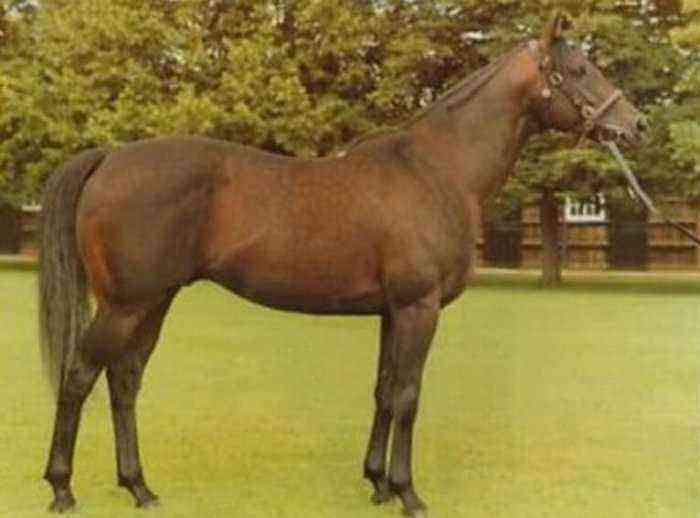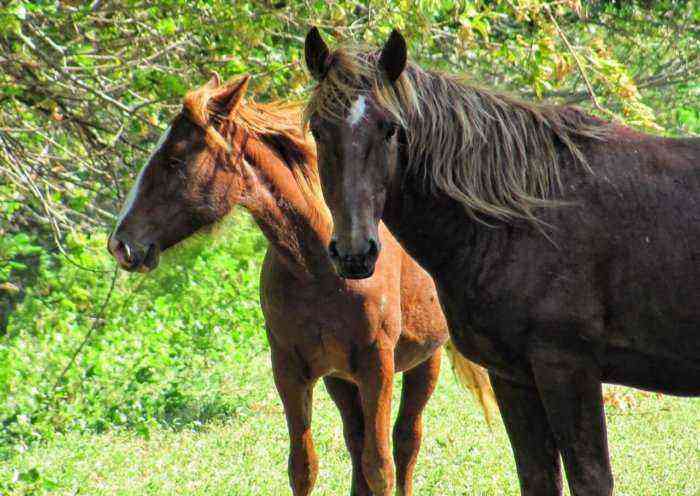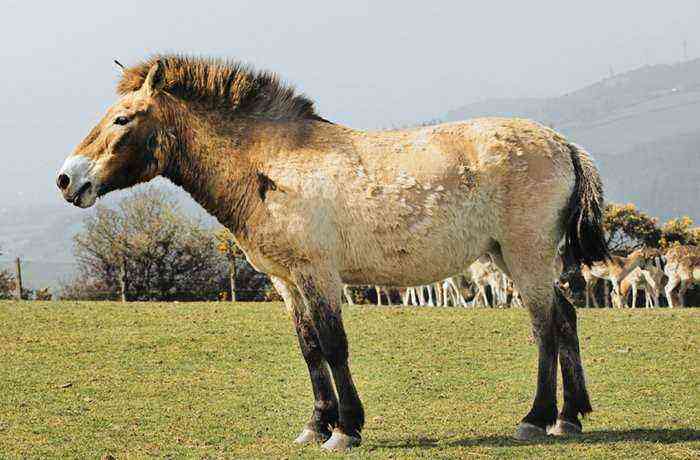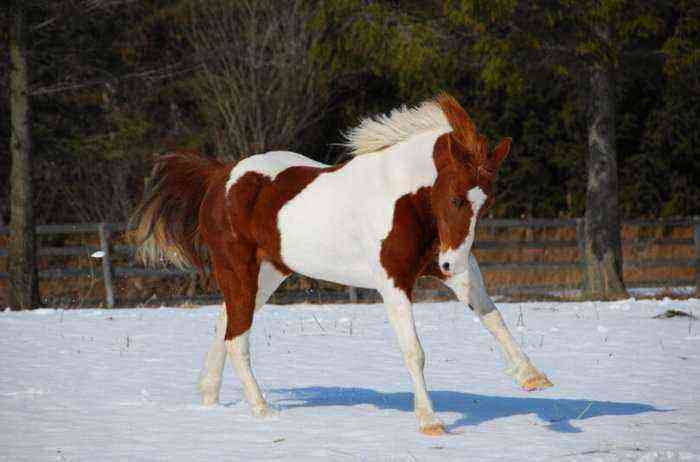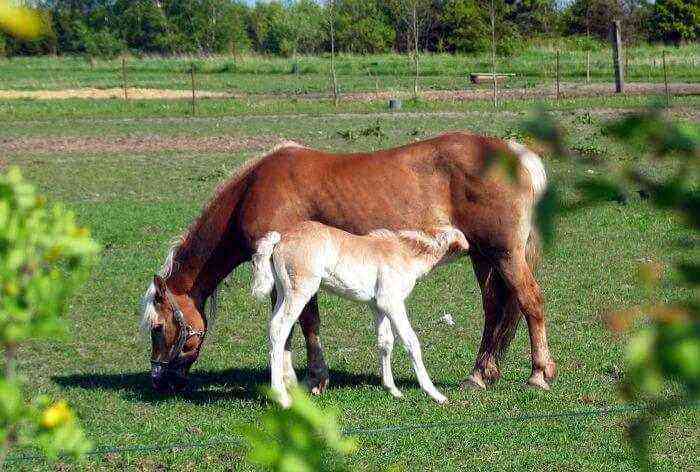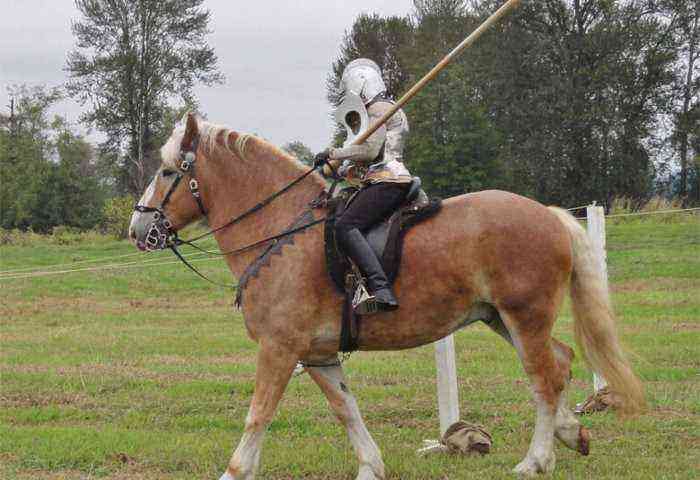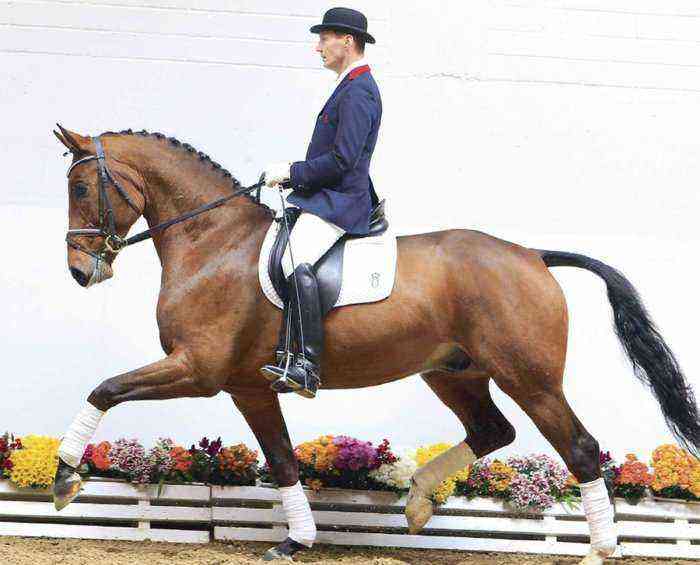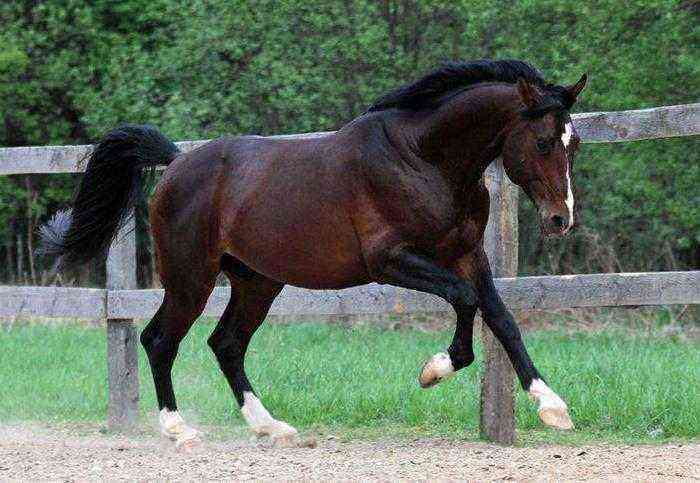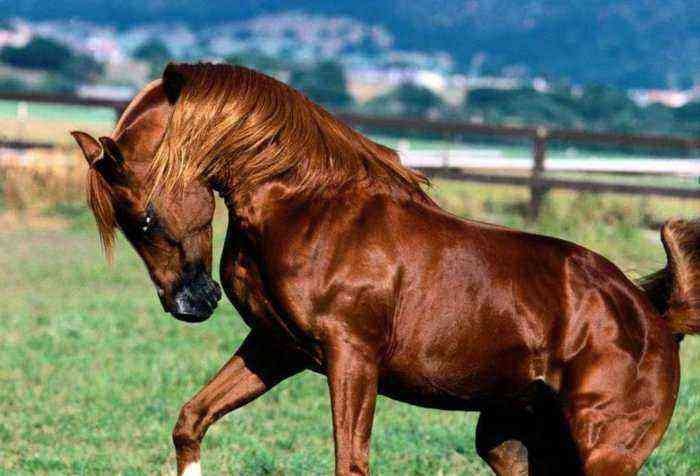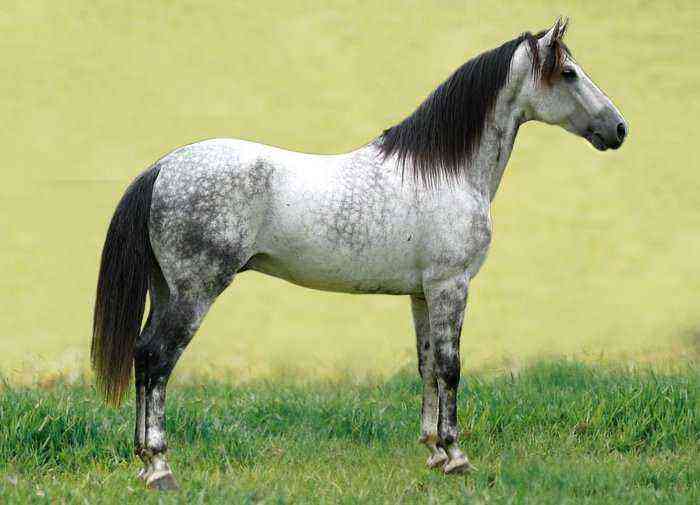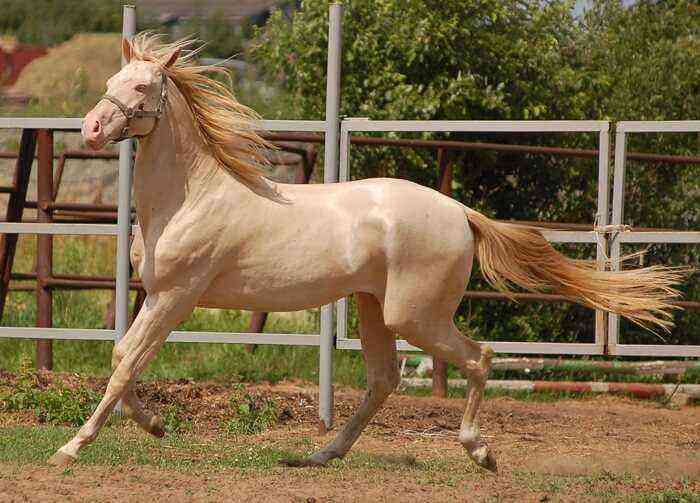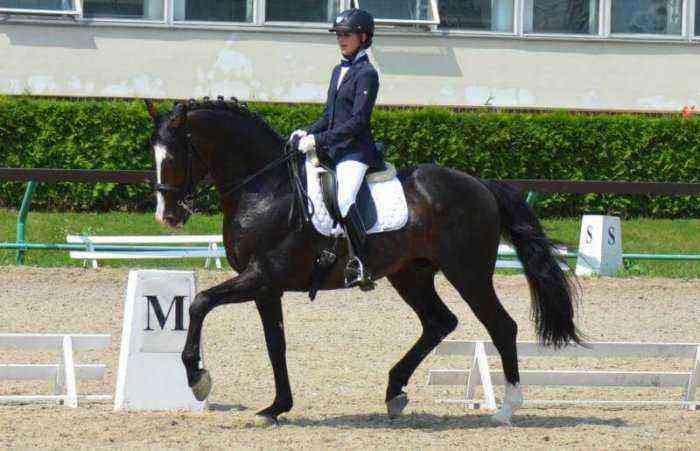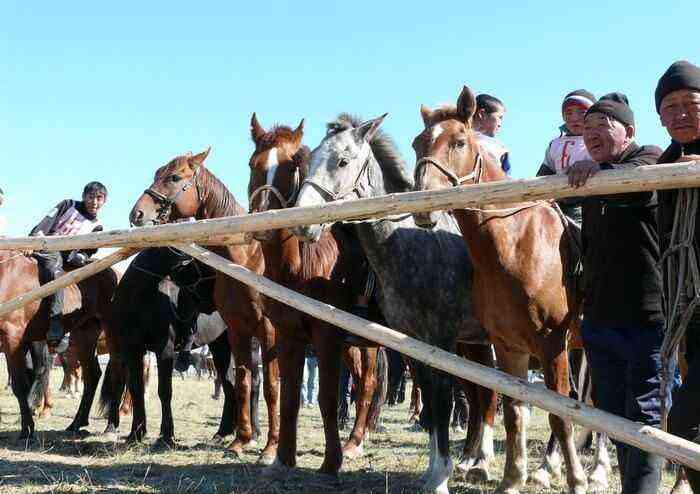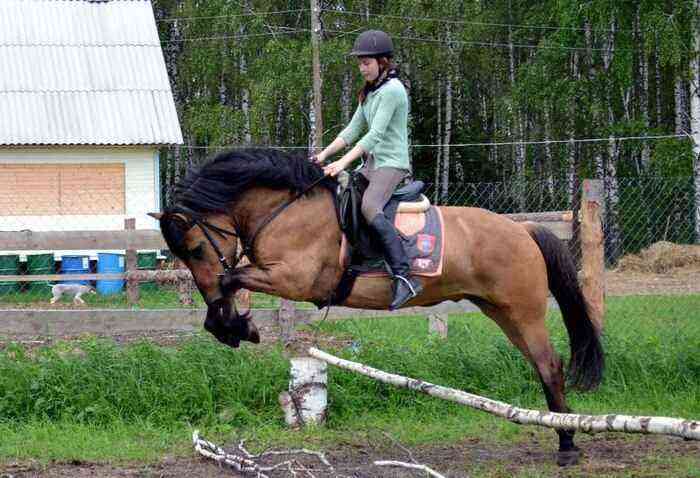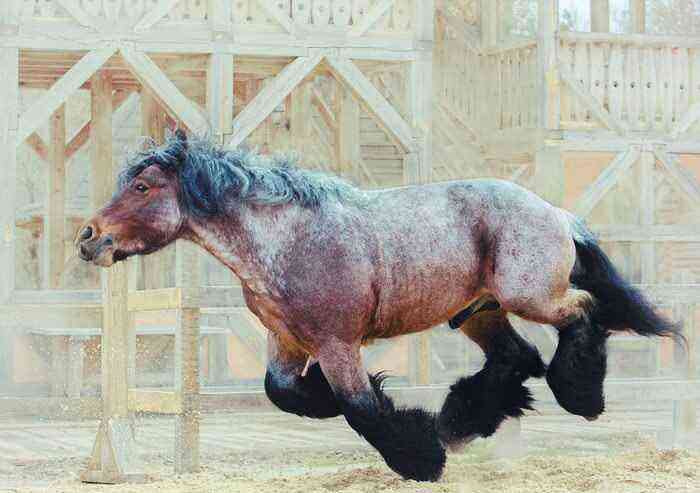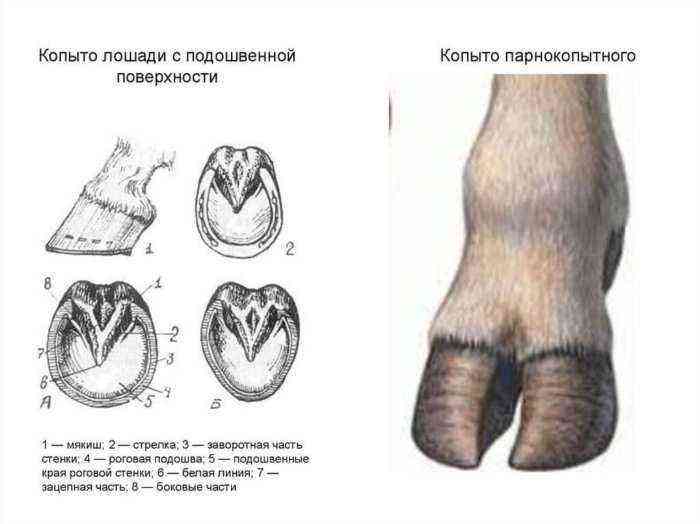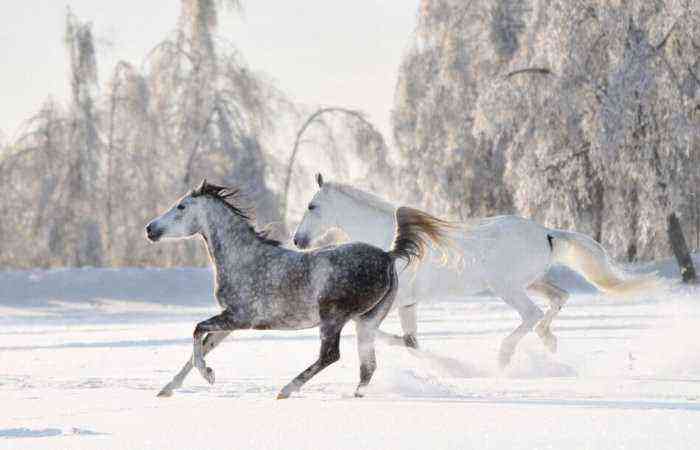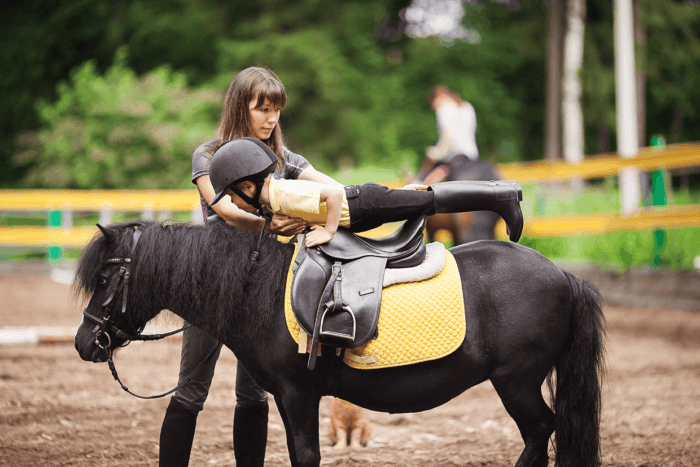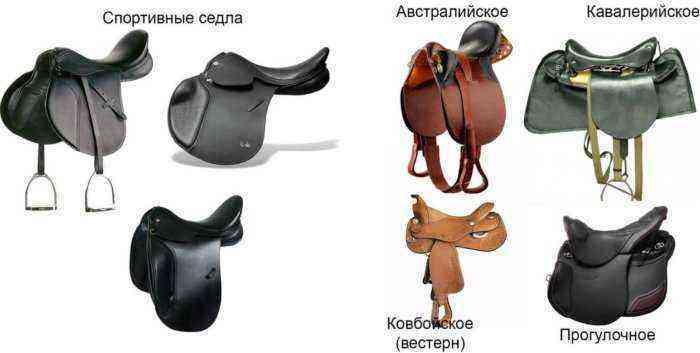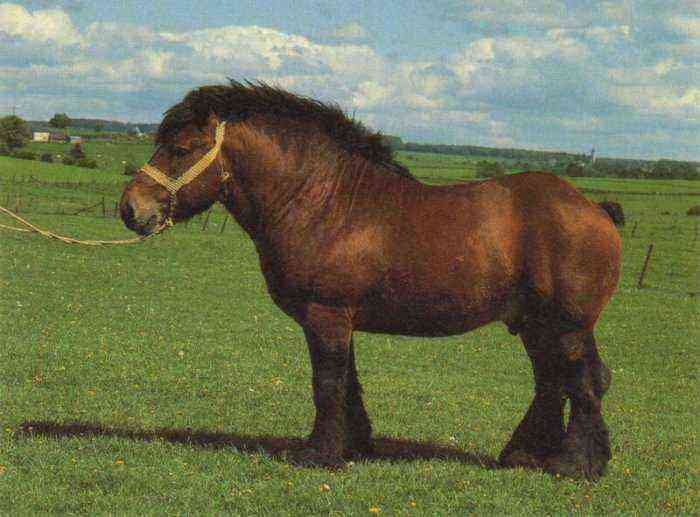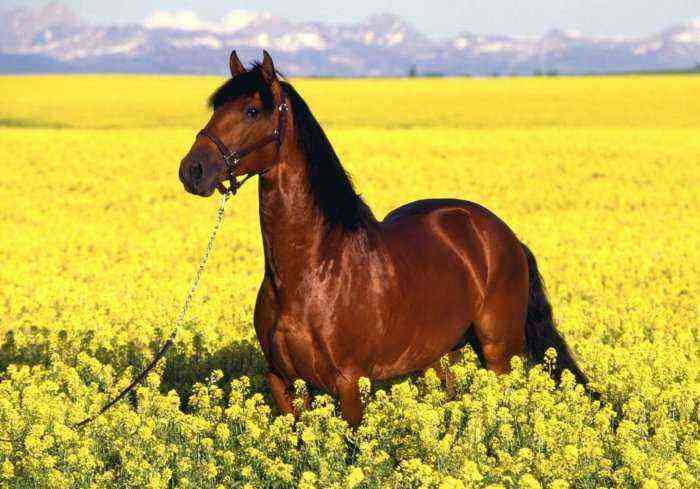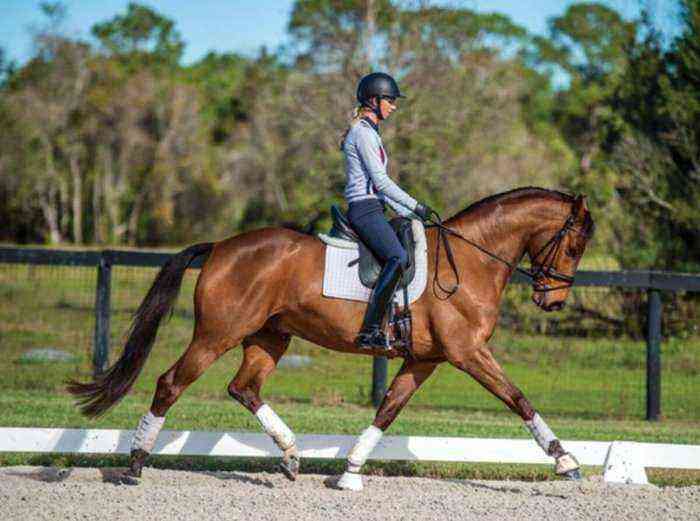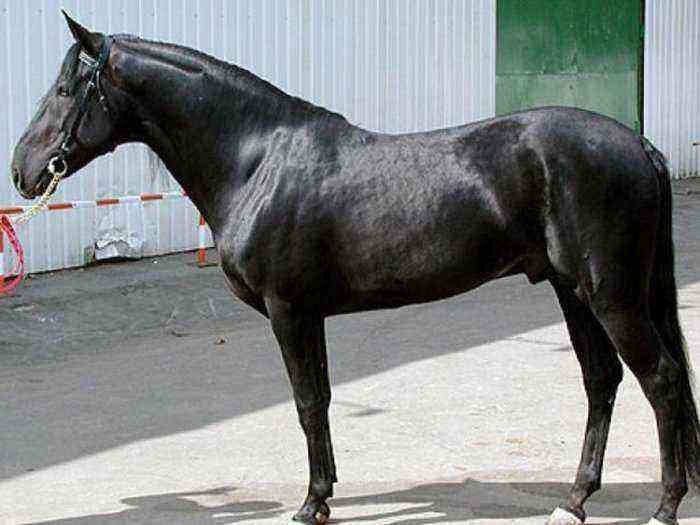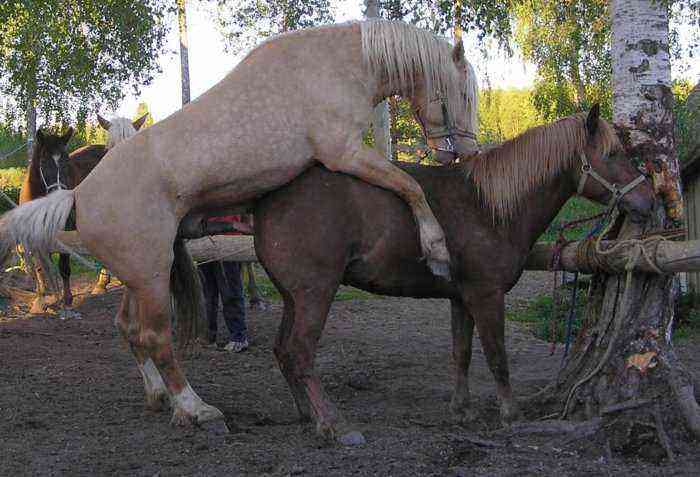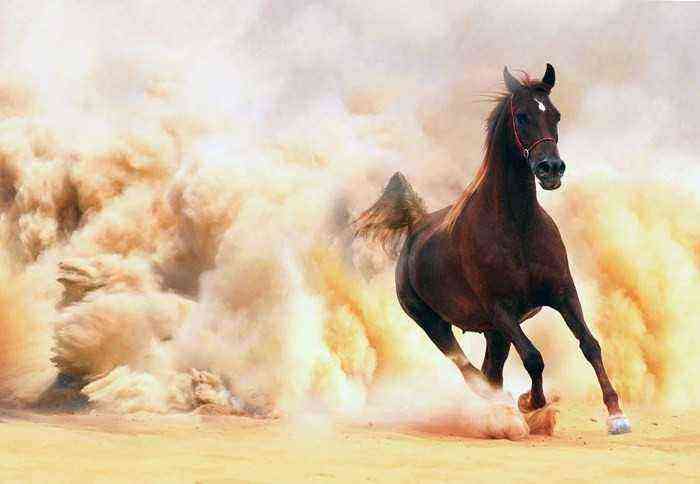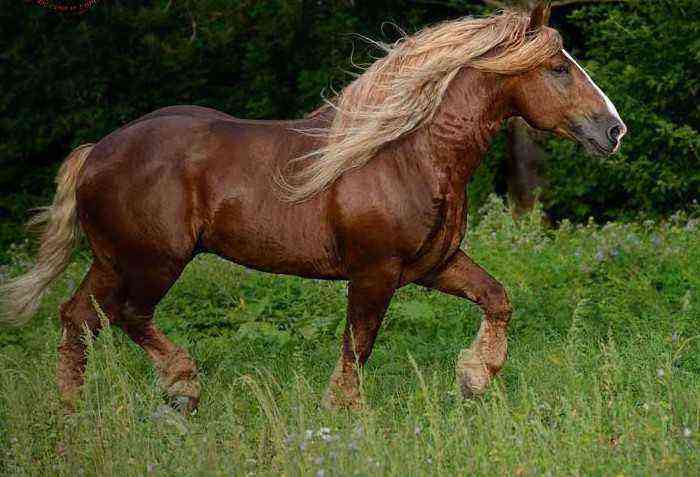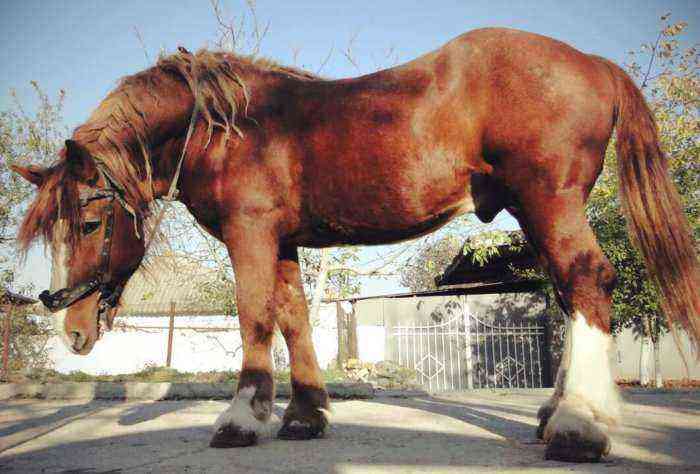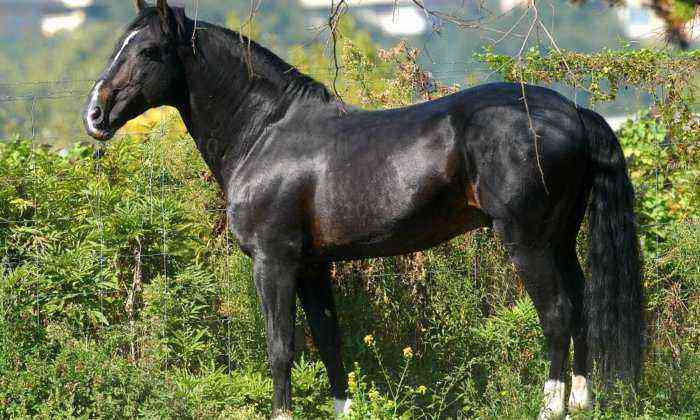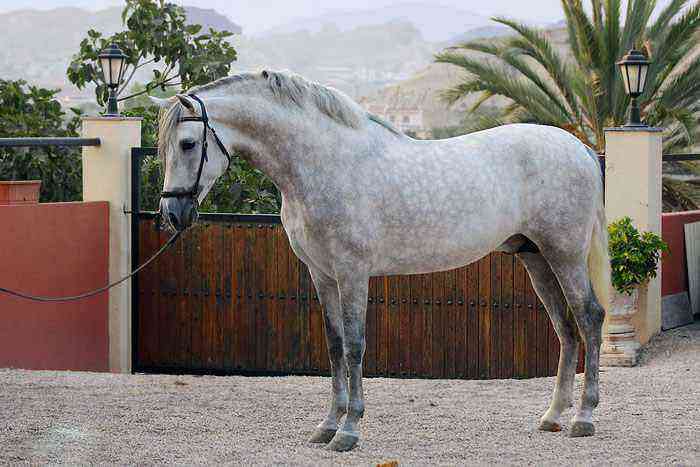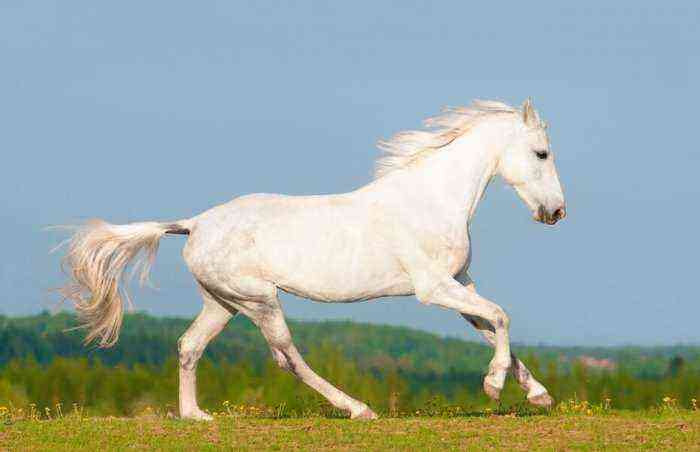Heavy draft horse breeds played an important role in people’s lives before the beginning of the period of mechanization. They were used as faithful helpers in the countryside. Strong horses were harnessed to the plow, with their help they delivered large loads from one point to another. Now most draft breeds are on the verge of extinction.
Heavy horses
Distinctive features of heavy draft breeds
Heavy horses are the strongest on the planet. They are characterized by large body dimensions, massive legs, and a wide back. Since ancient times, such animals served for the benefit of man. In the Middle Ages, they carried knights dressed in iron armor, and later they were involved in field work.
Features of heavy draft breeds:
- strong constitution;
- great strength;
- good disposition;
- unpretentiousness.
Popular heavy draft breeds
Almost every country has its own breeds of draft horses. In Russia, these include Russian, Soviet and Vladimir heavy trucks. In England, Shire horses are popular, in France – Percherons, and in Belgium – Brabancons. Each population has its own history, features and differences.
Russian heavy truck
The ancestors of Russian draft horses were the Ardenians, who inhabited the territory of modern Belgium, and local working mares. When the Belgian stallions came to Russia, they immediately aroused the interest of local residents. The horses were distinguished by their violent strength and moved faster than the native horses. Crossbreeds were improved several times by infusing the blood of Brabancons, which eventually led to an increase in their growth.
The Russian heavy truck breed was registered in 1952. Its representatives are short – up to 155 cm at the withers. They possess:
- elongated body;
- long curved neck;
- deep barrel-shaped chest;
- wide back;
- dry, very strong short limbs.
Breed Russian heavy truck
Attention! Russian heavy trucks have a number of advantages – they mature early, are distinguished by strong immunity, complaisant character, unpretentiousness, and the ability to adapt to different climates.
Soviet heavy truck
This breed developed in the 18th and 19th centuries in the south of the Nizhny Novgorod region. The genotype was based on local bityugs and heavy trucks from Europe – Brabancons and Suffolks, distinguished by their gigantic dimensions and power. Local peasants could breed their own population on the basis of European draft horses and without the participation of the Bityugs, but they did not adapt well to local climatic conditions. By the 30s of the 20th century, the desired genetic traits began to appear in the descendants of Belgian and Russian horses, moreover, they were well entrenched.
The Soviet heavy truck breed was registered after the end of the Great Patriotic War. In its exterior, a well-developed forked croup and strong hind limbs with shortened hips and long hocks are noted. Representatives of the breed of medium height – from 1,55 to 1,7 m. An adult stallion weighs 900 kg. Over the years of selection, almost managed to get rid of the friezes on the legs, which made it difficult to care for the hooves.
Attention! The Soviet heavy draft horse is quite phlegmatic and good-natured. From European ancestors, she inherited a relative agility, which is usually unusual for draft breeds.
Vladimir draft horse
The history of this breed began in 1886, when the English Clydesdale heavy trucks arrived at the Gavrilo-Posad stable. They were used for crossing with local mares, which are small in stature, but have good endurance and unpretentiousness. A little later, shires also participated in the selection, but they did not greatly affect the development of the domestic heavy draft breed.
Vladimir horse
The Vladimir horse has the following features:
- high growth – 1,65–1,7 m;
- voluminous chest (its girth reaches 2 m);
- massive physique;
- a large head with a slightly hunched profile;
- long powerful neck;
- obliquely set shoulder blades;
- deflated croup;
- bony, correctly set limbs with dense overgrowth at the bottom.
Lithuanian heavy draft
From the name of the breed it becomes clear where it comes from, from Lithuania. Her ancestors are Zhmud horses and Swedish Ardennes. The results of the selection work pleased – the hereditary crosses turned out to be strong, knocked down, strong, had good health and remarkable strength.
In the exterior of the Lithuanian heavy draft breed there are some features – a disproportionate body build. The head of the animals is large, located on a massive neck of medium length. The body is short, well muscled, the back is wide, the ribs are rounded. The chest is large, deployed, deep. Legs are short and dry. Representatives of the Lithuanian heavy breed have a red color.
Australian heavy draft
The inhabitants of Australia did not have their own strong horses until the time of colonization. Aboriginal horses were small, but well adapted to the unusual climate of the continent. European colonialists brought representatives of four heavy draft breeds to the mainland:
- shires;
- clydesdale;
- Suffolk;
- percherons.
Australian draft breed
On their basis, the Australian draft horse was bred. The average height of these animals is close to 170 cm, and the weight is 700-900 kg. These are massive beautiful horses with a friendly peaceful character.
Attention! The coat color of the Australian heavy draft horse is solid. Individuals with spots and tan marks are not allowed for breeding.
Brabanson
This is a very ancient breed of horses, the ancestors of which are the Flanders horses that inhabited the territory of the Belgian province of Braband. In the Middle Ages, these horses participated in knightly battles, and then accompanied the cavalry. In the 18th and 19th centuries, strong animals found another use – they carried timber and other goods.
Attention! Today, Brabancons are protected by Belgian law and are considered a national treasure of the country. Their blood flows in the veins of Suffolks and Shires.
Exterior features include:
- high growth – 1,7–1,8 m;
- massive skeleton;
- a small head with expressive intelligent eyes;
- dense muscular neck of medium length;
- wide back and sacrum;
- powerful deep chest;
- strong, stable short legs.
Boulogne horse
The Boulogne breed, bred in France on the basis of Andalusian and purebred Arabian horses, also belongs to heavy draft breeds. It owes its name to the province of Boulogne. The blood of Mecklenburg horses added strength and endurance to the breed. Today, the population of Boulogne horses is in a deplorable state, despite the support of the French authorities.
This heavy-duty breed is characterized by a gray color. Animals are distinguished by a harmonious body composition, a muscular dense neck, a small head with neat pointed ears and intelligent eyes. The line of the back of the Boulognese is even, the withers are wide, the croup is well developed, and the tail is set high. Heavy trucks of French origin have short and very strong legs.
Boulogne
Irish draft horse
According to experts, the ancestors of the Irish heavy truck are Celtic ponies and Barbary. The breed was finally formed by the 19th century after crossing local working horses with thoroughbred riding horses. Crossbred descendants were used under the saddle, and for hard work and transportation of goods.
In appearance, compact horses are distinguished by good performance and strength. The exterior features of the Irish Heavy Draft breed include:
- height – 1,5–1,6 m;
- a small head with a wide forehead, located on a strong short neck;
- dilated nostrils;
- straight ears of medium size;
- flat massive back;
- wide withers;
- developed chest with protruding forward muscles;
- short strong legs;
- coat color: bay, red, gray, black.
Suffolk breed
The homeland of the Suffolks is England. These horses are descended from local mares and Norman horses. The stallion Crisps is considered the founder of the modern breed. He lived in the 16th century and was distinguished by good signs – growth above average, strong bones, harmonious body structure and strength.
These are the characteristics of his descendants. Interestingly, the representatives of the Suffolk breed are characterized by one type of coat color – reddish chestnut. In some individuals, it may be lighter or darker. Horses with a different color are not entered in the stud book and do not participate in reproduction.
The English draft horse has a massive build with correct proportions. An adult stallion weighs 700–900 kg, and its height is 1,65–1,7 m, the girth of the metacarpus is 24 cm. The entire body of the Suffolk is well muscled, the legs are dry, straight, strong. The croup is slightly lowered.
Attention! Modern representatives of the Suffolk breed are still used in agriculture, but now they are also used in equestrian tourism. With the help of these beautiful and strong horses, new breed lines for show jumping and triathlon are being developed.
Shayr
The Shire draft horse breed is a descendant of the Friesian and Flemish horses and is of English origin. Like most European heavy trucks, Shires were used for military purposes in the Middle Ages.
Shire heavy draft breed
These are tall and stately horses. The growth of the champion stallion Samson was 2 m 17 cm. Modern shires are distinguished by a large bone and a harmonious physique. Their height is 1,8–1,85 m, and their weight can exceed a ton. A characteristic feature of the breed is lush white friezes on the legs and a bald spot on the head.
Clydesdale – Scottish heavy truck
This breed is the national pride of Scotland. Her history is not known for certain, but scientists are inclined to believe that the Clydesdales originated from Belgian heavy trucks brought from England, when crossed with local mares.
In the 19th century, the interest of the Scots in the new breed increased greatly. The powerful horse was a faithful assistant in rural work. So the Clydesdales gained popularity and spread throughout Europe. By the middle of the 20th century, representatives of this breed were exported in huge quantities to America and even to Russia.
Attention! The ancestor of Scottish draft horses is the stallion Glanser, born in 1885.
The Clydesdales are real giants. The height at the withers of the stallion reaches 1,8 m. The average weight of an individual is 900–1000 kg. The representatives of the Scottish draft horse have a rather large head, a humpbacked profile, beautiful falling bangs and an expressive look.
Clydesdale horses – have a short powerful neck with a beautiful bend, a wide chest and powerful muscled shoulders, well-marked withers. Their limbs are wide and strong with large joints, and their lower part is decorated with luxurious friezes. The traditional suits of the Scottish heavy truck are:
- roan;
- bay;
- redhead;
- black.
The Clydesdales often have the sabino subcoat. The friezes on the legs are often white, less often they are painted in the main color of the coat.
Percheron
This is a relatively young breed of heavy draft horses of French origin. She was bred at the beginning of the 19th century by crossing local working mares with Arabian horses. According to experts, the development of the breed line was also influenced by Boulogne and Breton stallions. Its name is associated with the region of Perche, where these horses were originally bred.
The common suit of percherons is gray, they inherited it from their Arab ancestors. The French heavy truck has absorbed all the best from its ancestors:
- harmonious dry physique;
- strength and power;
- endurance;
- soft move.
Percherons have an average height of 1,62 m and a square body type. The girth of the stallion’s chest often exceeds 2 m, the metacarpus is also quite massive – 24-25 cm in circumference. Animals have a compact beautiful head with a protruding frontal part and a neat profile, a muscular neck, and a thick mane. Their back and withers are wide, the croup is powerful, straight, forked. The forearms of heavy trucks from France are of medium length, the pasterns are short, the joints are large and strong. Percheron giants are distinguished by their gentle nature and unpretentiousness. Today they are used to improve other breeds and create horses for hunting and sport.
french percheron
Dutch draft – Friesian horse
The small province of Friesland in the north of the Netherlands is the birthplace of these horses. In Holland, this breed is the national pride of the country. It is very ancient, and Spanish horses and local cold-blooded breeds are considered the ancestors of the Friesian horses. The ancestor of the Frisians is a stallion named Nemo.
The Dutch draft horse is very well built, although the neck and head seem too large against the background of the body. The body of the Frisians is dry and muscular, the stomach is taut, the chest is rounded, wide. The limbs are sinewy of medium length, their lower part is decorated with luxurious brushes.
The Frisians have a rather thick mane and tail, and the color is predominantly black. These horses are considered among the most beautiful in the world.. The average height of a horse is 1,62 m. Horses have sweeping movements, their trot looks impressive.
Heavy-duty breeds are strong horses. They are not capable of developing high speed and cannot boast of the elegance of forms, their purpose is different – to do hard work and carry goods. Now they are not as in demand as before, but many breeds of heavy trucks are of historical value. Thanks to enthusiasts, they have survived to our time, despite the wars experienced and the development of technological progress.
